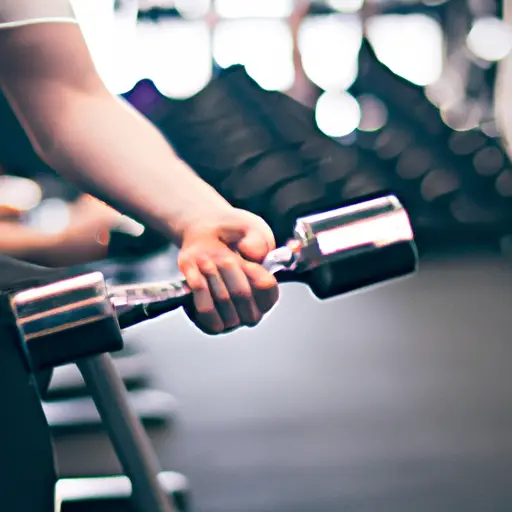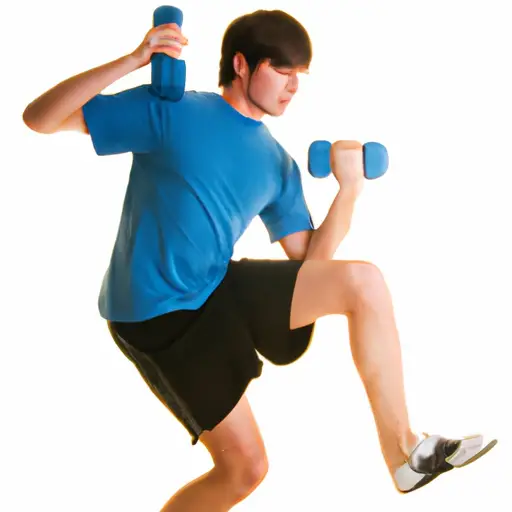Incorporating Calisthenics Into Strength Training
Hey there, folks! Welcome to my blog all about calisthenics and how it can supercharge your strength training routine. Now, you might be wondering what on earth calisthenics even means. Well, it’s a fancy word for bodyweight exercises, my friend. No need for fancy gym equipment or hefty barbells – just you, your body, and the determination to build some serious strength.
Now, I know what you’re thinking – can bodyweight exercises really give you the same benefits as traditional weightlifting? The short answer is absolutely! In fact, calisthenics can offer a whole range of unique advantages that you won’t find with other types of strength training. So get ready to dive into this exciting fitness world and discover why calisthenics might just be the key to taking your workouts to the next level.
Benefits of Incorporating Calisthenics into Your Strength Training
Who would have thought that bodyweight exercises could be so effective in building strength? Well, let me tell you, incorporating calisthenics into your fitness routine can do wonders for your body. Not only does it promote functional strength, but it also helps improve your balance, flexibility, and overall body control.
One of the major benefits of calisthenics is that you don’t need fancy equipment or a gym membership to get started. You can do these exercises anywhere, anytime using just your bodyweight. Talk about convenience! Plus, by simply utilizing the weight of your own body, you can engage multiple muscle groups simultaneously, giving you a full-body workout in no time.
But the benefits don’t stop there! Calisthenics also helps to enhance your range of motion, making you more agile and less prone to injuries. It improves proprioception, which is your body’s ability to understand where it is in space. This heightened body awareness leads to improved coordination and better overall physical performance.
Another noteworthy advantage of incorporating calisthenics into your strength training is its functional nature. Unlike traditional weightlifting exercises that focus on isolated muscle groups, calisthenics involves compound movements that mimic real-life activities. This means that you are strengthening the muscles you use in your everyday life, making you better equipped to handle any physical challenges that come your way.
Furthermore, calisthenics is a great option for those looking to achieve a lean and toned physique. It helps build lean muscle mass while burning excess body fat, resulting in a sculpted and defined appearance. And let’s not forget the added bonus of improved cardiovascular health. Calisthenics exercises often incorporate elements of cardio, helping to boost your heart rate and improve overall cardiovascular fitness.
So, if you’re looking for a versatile and effective way to strengthen your body, look no further than calisthenics. It offers a wide range of benefits, from promoting functional strength and flexibility to improving balance and coordination. Plus, it’s convenient, requires no equipment, and can be done anywhere. So, what are you waiting for? Start incorporating calisthenics into your strength training routine and experience the incredible benefits for yourself!
Types of Calisthenics Exercises
Hey there, folks! Ready to dive into the wonderful world of calisthenics exercises? Well, buckle up because we’re about to embark on an exciting journey that will transform your workouts. When it comes to calisthenics, there’s an incredible variety of exercises that you can incorporate into your routine. Let’s explore some of my favorite types of calisthenics exercises that will help you build strength and sculpt those muscles!
First up, we have the classic push-up. This exercise is a staple in calisthenics and for good reason. It targets your chest, shoulders, triceps, and core, giving you a full upper body workout. Plus, you can modify it to suit your fitness level by doing incline or decline push-ups. It’s a killer exercise that will surely get your heart pumping!
Next, let’s talk about squats. Ah, the beauty of working those legs! Squats engage your quads, hamstrings, and glutes, making them a fantastic compound exercise. Whether you choose to do bodyweight squats or go for pistol squats (advanced version where one leg is raised), you’ll be building strength and developing those powerful leg muscles.
Moving on to everyone’s favorite, pull-ups! These bad boys are a true test of upper body strength. Grab that bar, feel the burn in your back, biceps, and forearms as you pull yourself up. Don’t worry if you can’t do a full pull-up right away – start by doing assisted pull-ups or even negative pull-ups where you focus on the lowering phase. With practice, you’ll build that strength and eventually conquer pull-ups like a champ!
Let’s not forget about planks, shall we? Planks are an excellent way to strengthen your core muscles, including your abs and lower back. Get into a push-up position, rest on your forearms, and maintain that straight line from head to toe. Hold it steady, feel those muscles working, and watch your core strength soar!
Lastly, we can’t leave out the incredible burpees. Oh boy, burpees can really get your heart racing! Start by standing, then drop into a squat, kick your legs back into a push-up position, do a push-up, jump your legs back to the squat position, and explode into a jump. It’s a full-body exercise that targets your arms, legs, core, and cardiovascular system. Get ready to blast those calories away!
So, there you have it, folks! These are just a few examples of the wide range of calisthenics exercises you can incorporate into your strength training routine. Whether you’re a beginner or an experienced athlete, calisthenics has got you covered. Spice up your workouts, challenge yourself, and watch your strength and physique transform. Happy training, everyone!
Progressing with Calisthenics
Now, this is where the real fun begins! As you dive deeper into the world of calisthenics, it’s vital to understand how to progress your workouts effectively. Trust me, you don’t want to stay stuck doing the same exercises forever. So, how do you take your calisthenics game to the next level? One way is to increase the intensity of your exercises gradually. Start by adding an extra set or two to your routine. This will push your muscles to adapt and grow stronger. As you feel more comfortable, try incorporating variations of the exercises you’ve already mastered. For instance, if you’ve mastered push-ups, challenge yourself with one-arm push-ups or diamond push-ups.
Another crucial aspect of progressing with calisthenics is improving your range of motion. Don’t settle for shallow movements; aim for deeper squats or push-ups that go all the way down to the ground. This will not only increase the difficulty but also engage more muscle fibers, giving you better overall results. Remember, it’s all about squeezing out every ounce of effort to maximize your gains!
Additionally, don’t forget the importance of rest and recovery. Building strength with calisthenics takes time, and pushing yourself too hard can lead to burnout or injury. Allow your body adequate time to recover between workouts, so those muscles have a chance to repair and grow stronger. Trust me, your future self will thank you for it!
Lastly, don’t be afraid to explore new exercises and progressions. The world of calisthenics is filled with endless possibilities. From handstands to muscle-ups, there is always room to challenge yourself and break through your limits. Find inspiration from seasoned calisthenics practitioners and try incorporating their unique techniques into your own routine.
So, my friend, progressing with calisthenics is all about pushing yourself, improving your range of motion, allowing for proper rest and recovery, and embracing new challenges. Remember, this journey is as much about the process as it is about the results. Enjoy the ride, and never stop pushing for greatness!
Form and Technique Tips
Alrighty folks, let’s dive right into some nifty form and technique tips to nail those calisthenics exercises! So, you want to make sure you’re doing things right to maximize results and prevent injuries. First off, always remember to maintain proper alignment throughout your movements. Keep your core engaged, shoulders down and back, and focus on a smooth and controlled motion. This will not only help you avoid strain on your muscles and joints but also increase the effectiveness of each exercise.
Now, here’s a tip that might sound a bit bizarre, but trust me, it’s important: try to visualize the muscle groups you’re targeting during each exercise. This mental imagery can really help you activate those specific muscles and make sure you’re working them to the fullest. It may seem like a bit of hocus-pocus, but give it a whirl and see how it amps up your performance!
Next up, let’s talk about breathing. Remember to breathe rhythmically and consciously throughout your calisthenics routine. It’s easy to hold your breath or breathe inconsistently when things get tough, but proper breathing can provide you with the oxygen you need to power through those exercises. Inhale during the easier part of the movement and exhale during the more challenging part. Not only will this enhance your performance, but it also adds a certain rhythm to your workout, like a dance with your muscles, if you will.
Here’s a golden nugget of advice for you: don’t be afraid to adjust your grip or hand placement when needed. Different hand positions can target different muscles or change the difficulty level of an exercise. For instance, widening or narrowing your grip during push-ups can engage different muscles in your chest and arms. So go ahead, experiment a little and find the positions that work best for you and your goals.
Lastly, let’s chat about the ol’ proverb “practice makes perfect.” Now, I’m not saying you have to be perfect right off the bat, but regular practice and honing your technique are key to achieving optimal results. Take the time to focus on your form, even if it means slowing down your movements or scaling back the intensity. Quality always beats quantity, my friends!
In conclusion, keep these form and technique tips in your back pocket as you embark on your calisthenics journey. Remember, it’s all about proper alignment, visualization, breathing, hand placement flexibility, and practice, practice, practice! Together, we’ll rock those calisthenics exercises and build super-strong, toned, and balanced bodies.
How to Get Started
Alright folks, now that we’ve talked about the benefits of incorporating calisthenics into your strength training, let’s dive into how you can actually get started with this awesome workout style. Trust me, it’s not as complicated as it may seem!
First things first, find a suitable place to work out. Whether it’s in your backyard, a local park, or even in the comfort of your own living room, make sure you have enough space to move around freely. No need for fancy gym equipment here, my friend!
Next up, think about what your goals are. Are you looking to build strength, increase flexibility, or maybe both? Once you have a clear idea of what you want to achieve, it’s time to start researching different calisthenics exercises that align with your goals. Remember, variety is the spice of life!
Don’t rush things, my friend. Take it slow and steady. Start with the basics and gradually progress from there. Rome wasn’t built in a day, after all! Focus on mastering proper form and technique before moving on to more challenging exercises.
Consistency is key. Try to incorporate calisthenics into your routine at least 2-3 times a week. It’s all about building those habits, my friend! And hey, don’t forget to warm up and cool down before and after each session. Your body will thank you!
Oh, and one more thing – don’t be afraid to ask for help or guidance. Join an online community, find a workout buddy, or even seek the advice of a calisthenics coach. Having support and accountability can do wonders for your progress.
Lastly, enjoy the journey! Calisthenics is not just about getting fit; it’s about challenging yourself, pushing your limits, and having fun along the way. Embrace the process and celebrate every small win. You’ve got this, my friend!
Well, that’s a wrap on how to get started with calisthenics. Remember, the key is to believe in yourself and stay consistent. Are you ready to embark on this epic fitness adventure? I know I am, and I can’t wait to see you crush those calisthenics goals!
Conclusion
Well folks, that wraps it up! After diving into the world of calisthenics, I can confidently say that it’s been a game-changer for my strength training routine. Incorporating calisthenics exercises has brought so many benefits to the table that I can’t help but be excited.
The great thing about calisthenics is that it doesn’t require any fancy equipment or gym memberships. All you need is your own body weight and a little determination. It’s a cost-effective and convenient way to build strength and improve your overall fitness.
I’ve discovered that there are numerous types of calisthenics exercises to choose from, giving you plenty of variety to keep your workouts interesting. Whether you’re into push-ups, squats, or planks, there’s something for everyone. And the best part? These exercises can be easily modified to meet your fitness level, allowing you to progress at your own pace.
Speaking of progress, calisthenics offers endless opportunities for growth. As you master the basics, you can start challenging yourself with more advanced variations and techniques. It’s a journey of constant improvement, building your strength, endurance, and flexibility along the way.
Remember, though, that form and technique are vital in calisthenics. It’s essential to perform each exercise with proper form to avoid injuries and maximize results. Take time to perfect your technique and don’t be afraid to ask for help or seek guidance from a qualified trainer.
If you’re ready to give calisthenics a shot, here’s a tip: start small and gradually work your way up. Rome wasn’t built in a day, and neither will your calisthenics skills. It takes time and consistency, but the rewards are definitely worth it.
So, what are you waiting for? Get out there and start incorporating calisthenics into your strength training routine. Trust me, you won’t regret it. Your body will thank you, and you’ll be amazed at what you can achieve!
That’s all I have for now, so keep pushing, keep striving, and keep reaching for those fitness goals. Until next time, stay strong my friends!
Strength Training Calisthenics FAQ
How do I incorporate calisthenics into weight training?
As someone who’s been on the fitness journey for quite some time now, let me share a few tips on incorporating calisthenics into your weight training routine. First off, I reckon it’s vital to understand the underlying benefits of calisthenics. They enhanced my strength, endurance, and flexibility in ways traditional weightlifting couldn’t. To get started, try integrating bodyweight exercises, like push-ups, lunges, and squats, into your lifting regimen. Feeling a little fancy? Well, shake things up with some more advanced moves, such as pistol squats or handstand push-ups, to truly challenge your body. Remember to engage in proper warm-up exercises beforehand and pay attention to your form throughout. Always prioritize safety, mate. Lastly, don’t forget to celebrate your progress along the way – it’s the small victories that keep us going! So, give calisthenics a whirl and watch as your strength training gains lift off in the most magnificent way!
Does calisthenics transfer to weightlifting?
Absolutely, calisthenics can definitely transfer to weightlifting! In fact, incorporating calisthenics into your strength training routine can be highly beneficial in enhancing your overall performance and building functional strength.
When it comes to weightlifting, calisthenics can serve as an excellent complementary training method. The dynamic bodyweight movements involved in calisthenics, such as push-ups, pull-ups, squats, and lunges, can help improve your core stability, flexibility, and overall body control. These skills are directly transferable to weightlifting, enabling you to execute lifts with better form and reduce the risk of injuries.
Additionally, calisthenics can help you develop the foundational strength necessary for weightlifting. By focusing on bodyweight exercise variations that target major muscle groups, you can build a solid base of strength that will enhance your ability to perform compound lifts like deadlifts, squats, and bench presses. Moreover, calisthenics trains your muscles to work together in a functional and coordinated manner, which can translate into improved lifting mechanics and greater power output.
To fully harness the benefits of incorporating calisthenics into your weightlifting routine, it is important to focus on progressive overload and continuously challenge your muscles. As you gain strength and become proficient in basic bodyweight exercises, you can gradually increase the difficulty by adding variations like pistol squats, handstand push-ups, or muscle-ups. Don’t be afraid to experiment with different training techniques and incorporate calisthenics into your weightlifting program to achieve a well-rounded and balanced level of strength training. So, go ahead and dive into the world of calisthenics, and watch your weightlifting skills soar to new heights!
How do I start strength training calisthenics?
To get started on incorporating calisthenics into your strength training routine, there are a few key steps you can take. First off, it’s crucial to establish a solid foundation by mastering the basic movements. These simple exercises, like push-ups, squats, and lunges, form the basis of your calisthenics routine.
Once you have a good grasp of these essentials, you can gradually progress to more advanced variations, such as handstand push-ups or pistol squats. Continuously challenging yourself by adding variations and increasing the intensity will help you steadily build strength.
In addition to mastering the movements, it’s vital to create a structured training plan. This plan should include a combination of bodyweight exercises targeting different muscle groups, ideally performed two to three times a week. By following a consistent training routine, you can steadily progress and avoid plateaus.
Remember that technique is key in calisthenics. It’s crucial to focus on proper form and execution to maximize results and prevent injury. Moreover, incorporating mobility and flexibility training into your routine will enhance your overall performance and prevent muscle imbalances.
A great way to enhance your calisthenics training is to seek guidance from experienced trainers or join a calisthenics community. These resources can provide valuable tips, feedback, and support, helping you stay motivated and reach your strength training goals.
So, don’t be afraid to jump in, start mastering those basic movements, create a structured training plan, pay attention to technique, and seek support along the way. Incorporating calisthenics into your strength training routine is a fantastic way to challenge yourself and achieve impressive results. So, let’s get out there and start crushing it!






